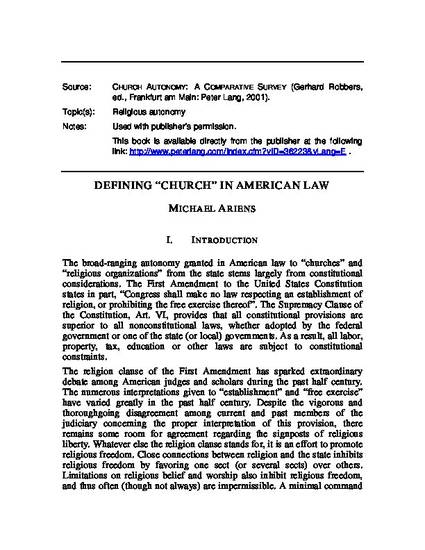
Balancing the autonomy of religious organizations against regulatory laws remains both a difficult and hotly contested issue. It is helpful to survey labor, property, tax, and education laws to illustrate the tensions between religion and government in American law.
Labor law cases show the autonomy of religious organizations concerning governmental regulations through the National Labor Relations Act and Title VII. In regard to church property, the government has an interest in regulating how religious organizations buy and sell land, run day care centers and food kitchens, raise and borrow money, commit torts, and enter into contracts. Section 501(c)(3) of the Internal Revenue Code provides tax-exempt status for churches, integrated auxiliaries of churches, and charitable organizations. The IRS has promulgated numerous factors to distinguish among these three organizations. Although parents have the right to send their children to religious schools, the assistance they can obtain from the state to effectuate that choice is limited. The Supreme Court has decided a number of cases involving both the extent of religious symbolism and accommodation in public schools and the extent of aid to religious schools. These cases and laws show that although American law zealously guards the autonomy of religious organizations, it does not grant those organizations the right to be a law unto themselves.
